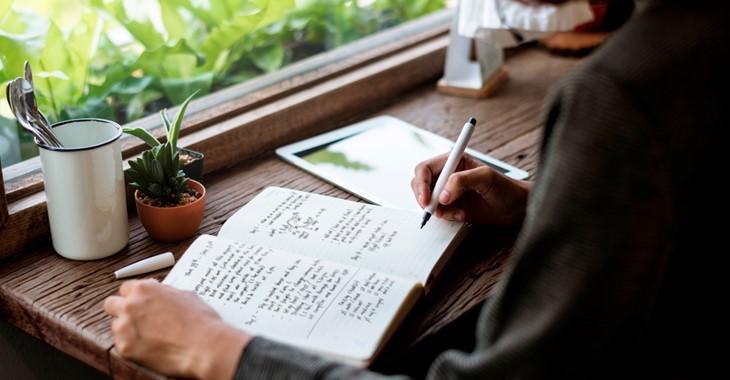How does meth affect your life?
Self-help strategies
After using meth regularly over several years, some people experience a long-term or chronic lack of the chemical messengers which make you feel happy. This can cause people to feel moody, have trouble concentrating and making decisions, and either lack motivation to do usual things or behave in reckless ways. This can sometimes last for months or even a year or two.
The main issues in treatment are to make sure that your mood doesn’t get too low; improve your general health by eating a good diet and getting plenty of rest; manage cravings; and take things day-by-day so you don’t get frustrated with your progress and go back to using.
This section provides a range of strategies to help you reduce your meth use and stop using meth.
The worksheets in each section can help you plan and implement these strategies. Please download and save the worksheet PDFs prior to filling them out, this will ensure your responses are saved.
If you would like a hard copy of the Self-Help Guide and diary (including all Self-help strategies worksheets) please contact the Alcohol and Drug Support Service at alcoholdrugsupport@mhc.wa.gov.au.
Want to know more?
Setting a goal
If you have made the decision to not use as much meth or to not use meth at all, it may help to write it down - the Setting a Goal Worksheet can help you get started. The decision to reduce your meth use or stop using meth will be your new goal and you need to have a plan in place to ensure you reach it.
Think about things like supportive people or places. Do you need to avoid certain people and places that make you feel vulnerable to using more than you plan?
If you’re not sure where to start, writing down what you’re going to do and how you’re going to do it, under these headings, can help.
- I am going to…
- The most important reasons I want to achieve my goal are…
- Things that may stop me achieving my goal are…
- Things that I can do to overcome these barriers are…
- The ways other people can help me are …
- The first thing I will do to achieve my goal will be…
- I will know when I have achieved this goal because…
Reducing Use
If you decided to cut back then keeping a diary may be very helpful.
This will help you monitor your use and show you what is happening, and when and where change can take place. The diary also makes it easier for you to identify your high-risk situations like when you use too much or are very tempted to use.
Using your diary
- Keeping a diary can help you keep track of what you are doing.
- Write in it when you are using or feel like using. This will help you see changes.
- Your diary will give you an idea of how much money you spend.
- Review your diary with your counsellor or case manager, if you have one.
- Put a cross against high-risk times when you used more than you meant to or had a strong urge to use.
- Read and think about what you have written to help you keep on track.
Setting guidelines for use
- If your goal is to reduce, you will need some plans like these:
- How many days a week will I drink/use?
- How much will I have on these days?
- How many non-using days will I have each week?
- How much will I use in a week?
- In what high-risk situations will I avoid any use?
Coping with cravings
Cravings are very common especially when you first decide to change your behaviour. Cravings are the result of long-term meth use and can continue long after quitting. So, people with a history of heavier use will experience stronger urges.
“Cravings are like a wave at the beach. Every wave (craving) starts off small, and builds up to its highest point, and then it will break and flow away. Each individual craving rarely lasts beyond a few minutes.”
Cravings can be triggered by: people, places, things, feelings, situations or anything else that has been associated with using in the past. Each time a person does something other than use in response to a craving, the craving will lose its power. Over time they become less frequent and less intense.
It is normal when you get a craving to struggle between wanting to use and wanting to stick to your goal. Here are some helpful, healthy strategies to deal with cravings:
Delay
Cravings/urges are like waves that tend to peak and reduce over a 45 minute period. They build up to a point and then they come down. Urge surfing is being able to delay your decision to use, to ride the urge out and to remind yourself that it will decrease. You can do this by delaying the decision about using for one hour. Don’t try to decide whether or not you are going to use as this will only make you more anxious. During this time it is helpful to remind yourself about why not using is important to you and engage in a behaviour that is consistent with your life goals.
After an hour ask yourself ‘Why don’t I want to use?’ or ‘Why is it important that I don’t use?’’
Distract
The more you think about your craving the more you feed it and the bigger it becomes. It is helpful to distract yourself by doing something else. Here are some suggestions. You can add to the list:
- Visiting a supportive friend
- Reading
- Watching TV
- Gardening
- Walking
Supporters
A supporter is someone you can trust and feel comfortable with such as a friend, a family member or someone in the community. Once you have chosen your supporter you will need to let them know what will be most helpful for you if you call them in distress. For example you may need them to remind you why you changed your use and encourage you to continue. You may choose to ask them simply to listen to you or help distract you from your craving.
Consequences
Remind yourself of the reasons you have decided to change. Sometimes when you are experiencing a craving it can be difficult to remind yourself of the problems of using. You could try writing down the reasons why you want to change and placing them where they are easily visible. It may be helpful to copy these reasons onto a small card that you can put in your wallet and carry around as a helpful reminder.
Self-talk
Self-talk is how you talk to yourself. When you are experiencing a craving you can often make it bigger than it is through your self-talk e.g. “This is so bad! I can’t cope! I need to use.”
During this time you can also be hard on yourself and use negative self-talk. “I am so weak I can’t cope without using. Everyone is right I can’t do this. I am a failure for wanting to use.” This type of self-talk is unhelpful and can lead to you drinking or using.
When you are experiencing a craving, listen to your self-talk and make sure it’s positive and helpful. Write down some of your self-talk. Ask yourself whether it’s positive and helpful or negative and unhelpful.
Good, positive self-talk can be really helpful as long as it’s realistic. For example, you could say things to yourself such as: “I am having a craving but I got through the last one and will get through this one.”
Use the Coping with Cravings worksheet to note down what you plan to do to help deal with cravings.
Identifying and managing high-risk situations
High-risk situations are those challenging situations that link to your use. These can be internal such as being bored, stressed, and frustrated or external such as places, people, or situations. Use the Identifying High-risk Situations worksheet to identify your high-risks and make a plan for how you’ll manage them.
Managing high-risk situations
Rather than waiting until you are under pressure, work out beforehand some ways of coping. You’ll feel more in control if you have prepared for a difficult situation.
There are various ways in which you can manage high-risk situations. Two useful strategies are problem-solving and being assertive.
Problem-solving
Below are five steps to follow when you are attempting to solve a problem. Always problem-solve by writing things down. Focus on one problem at a time.
- Identify the problem
As an example, you have been invited to a friend’s party where you know people will be using meth.
- Brainstorm all solutions.
Write down even those that may seem crazy or impractical.
- Weigh up the costs and benefits of each solution.
- Choose the best solutions
Once you have looked at the costs and the benefits of each solution, choose the ones that will work best for you.
- Put a plan in place
If the plan does not work out, look at what happened, and where it went wrong. Try to come up with new solutions.
Remember that life will throw temptations at you. The confidence that you have developed from strategies that have worked for you previously can help you to problem-solve in new situations.
Dealing with high-risk or unexpected situations gets easier with practice!
Assertion
One good way to control your use is to be able to say “no”.
Assertion is a skill that helps you to act in line with your values and goals. It involves standing up for yourself and expressing your feelings, thoughts and opinions openly and honestly. It is important not to be aggressive or interfere with other people’s rights. If you have always said “yes” in the past it can be hard to say “no” the first time. But once you have taken the first step it will get easier and you will feel good about yourself.
A simple “No thanks, I’m cutting down” is effective or “No thanks, I’m having a break for a while” or “No thanks, I don’t want to use anymore. If you’re my friend you won’t ask me again.”
If others keep encouraging you to use, ask yourself why. Maybe they will feel more comfortable about their own use if you join in with them.
You may find yourself in situations where you do not have to directly say “no” to using meth but have to say “no” to situations that could lead to you using – you’re high-risk situations.
When being assertive it is best to:
- use a calm firm voice
- speak at a steady even pace
- use direct eye contact
- keep it simple
- state your needs, feelings, opinions and thoughts clearly
- state your position, the reason for your decision and acknowledge what the other person has said.
- use “I” statements
- I feel (taking responsibility for your feelings)
- when you (stating the behaviour that is a problem)
- because (what you object to in the behaviour or its results)
- I’d appreciate it if (offering an alternative to the behaviour)
There may be times when you have worked really hard to reach your goal by managing your cravings and planning for high-risk situations, yet you still end up using. The Managing a Slip Up page discusses what you can do when you find yourself in this situation.
Lifestyle changes
Changing your use may mean changing your lifestyle and setting new goals.
When setting goals, ask yourself:
- is this an important goal?
- is it achievable?
- will it improve my quality of life?
When setting goals remember to write down:
- what your goal is
- how you plan to achieve it
- when you are going to start and when you hope to reach your goal.
Remember some goals may be longer term. In order to reach these goals it is helps to set short-term goals. To keep you on track it is also helpful to regularly review your goals and once reached, to set new ones.
Changing any aspect of your behaviour can be difficult. We know that people who are more successful in changing their behaviour use short-term goals to help them plan ahead and be prepared.
It is important that your goals are SMART. This means that they are:
S=specific
M=measurable
A=achievable
R=realistic
T=timely
For example, you may decide to use less meth when you do use. This should be a really clear goal that you will be able to achieve over the next four weeks.
Use the Lifestyle Changes worksheet to set your own SMART goals.
It is important to also plan goals related to other areas of your life. Having a balanced life is important for your wellbeing. Think about what activities you may enjoy and work out a plan to fit them into your life. For example committing to a physical activity or recreational goal.
Noticing and changing unhelpful thoughts
Explaining thoughts
How we see or think about something and our beliefs can influence the way we feel and behave. Our thoughts are often automatic and outside our awareness. We can have helpful, unhelpful and neutral thoughts. Unhelpful thinking can often lead us to feeling distressed, anxious, sad or angry. It can also result in us behaving in unhelpful ways.
The following example will show how our thoughts can affect the way we feel and behave.
|
Situation - After six days of abstinence you use meth. |
|
|
Helpful thinking “I have slipped this week and used. However I have done really well not to use for the past six days and I will be able to get myself back on track.” |
Unhelpful thinking “I used today after six days of being abstinent. I am weak, I am a failure and I am stupid. This is pointless.” |
|
Helpful feeling
|
Unhelpful feeling
|
|
Helpful behaviour
|
Unhelpful behaviour
|
Unhelpful thinking styles
From time to time we engage in unhelpful thinking styles. For example thinking things are black or white, over-generalisation, catastrophising, and jumping to conclusions. Use the Noticing and Changing Unhelpful Thoughts worksheet to help identify the one you use.
Changing unhelpful thinking styles
Once you have identified your unhelpful thoughts you will need to know how to change them. The first step in changing your thinking is to increase your awareness of your thoughts. This can be done by keeping a daily diary and using the A to F guide below:
- Activating event or the situation. What is the situation?
- B What were your thoughts when the event was occurring?
- C What were the consequences of the event? How did you end up feeling and what did you end up doing?
- Disputing the automatic unhelpful thoughts. Recognising that what you automatically think might not actually be the case.
- Explanation that better explains the situation. Now that you have disputed your automatic thought, write down your new helpful thought.
- Forging ahead. Continue to move ahead, it may take some time for your helpful thoughts to become automatic.
Use the Noticing and Changing Unhelpful Thoughts worksheet to help you increase awareness of your thoughts and make a plan to forge ahead.
Mindfulness
It can often be difficult to control our thoughts and challenge them. If you are finding this difficult and are noticing that the more you try to control your thoughts, the worse they are getting, then learning mindfulness skills may be useful.
Mindfulness is about bringing your attention to the present and being in the moment rather than being caught up in your thoughts. We can be mindful of both our thoughts and feelings.
Being mindful of our thoughts means being aware of them and recognising that they are not truths.
Being mindful of our feelings means noticing our feelings and accepting them.
Mindfulness is not about avoiding or getting rid of feelings or thoughts. It’s about being able to live with your feelings and untangle yourself from your unhelpful thoughts.
As you learn to do this, you may learn that some thoughts and feelings are easier to live with than you thought they were. Learning to live with disturbing thoughts and feelings means you will have less need to block them out by using meth.
Mindfulness of thoughts
We all have thoughts where we put ourselves down. For example thinking “I am not good enough”. Most of us try to block out these thoughts, but they can keep coming back.
A mindful approach involves accepting that the thoughts will keep coming up, but creating distance from them. In this way, we become less entangled with the thoughts and are less likely to beat up on ourselves.
Use the Mindfulness worksheet to take note of some of your thoughts and change how you feel about them.
Here’s an example of if you add to your thought where you put yourself down and change its power.
Add the following words “I am having that thought … that I am not good enough.”
Notice what happens:
“I am having the thought that I am not good enough.”
Add the following words “I notice … I am having that thought that I am not good enough.”
Notice what happens:
“I notice I am having the thought that I am not good enough.”
Other strategies include giving your story a name, using humour and adding music to your thought.
Mindfulness of feelings
The following exercise is to learn how to be mindful of your feelings rather than struggling with them or trying to avoid them. Use mindfulness for feelings that are uncomfortable and distressing, but not when your feelings are overwhelming. If your feelings are overwhelming it may be better to use grounding.
- As you breathe deeply scan your body and notice what you are feeling. If there is something that feels uncomfortable don’t try to change it. Instead just observe it and notice everything about it. Where is it located in your body? Where does it start? Where does it stop? If it had a colour what colour would it be? If it had a shape what shape would it be? Does it move? Does it have a temperature? Is it opaque or transparent? Heavy or light? Notice where it is most intense and where it is weakest.
- Breathe slow deep breaths into the feeling.
- Now breathe slow deep breaths around the feeling, creating space around the feeling so that it can be there more comfortably.
- Just allow the feeling to be there.
- Once you have done this scan your body again and see if there is another uncomfortable feeling. If there is, carry out the above steps again.
To finish this exercise, expand your awareness to everything you can feel in your body, then notice everything you can hear, then everything you can see.
Relaxation
Relaxation is useful when you are feeling stressed or anxious, but it is good to practice at other times so you remember to use it when you need to. The two most common types of relaxation are deep breathing and progressive muscle relaxation.
Benefits of relaxation
- Can help you to stop and notice your thoughts and feelings.
- Helps you to challenge unhelpful thinking.
- Promotes good health.
- Decreases your heart rate and blood pressure.
- Decreases your levels of stress and anxiety.
- Helps you listen to your body.
- Helps you sleep.
Guidelines for practice
- You should practice relaxation regularly even if you are not feeling stressed, overwhelmed or anxious. This will mean that when you are feeling these emotions you have already mastered these skills and will be able to use them more effectively.
- Get into a comfortable position.
- Try not to try. Rather, observe your body, as the more you try to relax the more difficult it will become.
- If you feel sleepy open your eyes, unless you are using relaxation to help with sleep problems.
Deep breathing
Deep breathing can be used at any time or place. When you are stressed you will notice that your breath becomes shallow and irregular and your chest feels tight.
Deep breathing means breathing deeply into the bottom of your lungs before slowly breathing all the air out again (it can help to imagine breathing into your lower belly). This will allow your chest to loosen and your whole body to relax.
Try the following exercise:
Place your hands, fingers linked, just below your ribs. Breathe deeply into the bottom of your lungs for a count of five. Your fingers should separate a little. Breathe out fully for a count of five. Repeat this breathing pattern five times.
Progressive muscle relaxation
Progressive muscle relaxation involves tensing and relaxing the various parts of your body.
Getting ready:
- Find a quiet comfortable spot.
- Take off your shoes.
- Make sure you are warm or cool enough.
- When doing this exercise you can focus on a spot in the room or you can close your eyes.
- As you are doing the exercise take note of the sensations in your body.
- Compare the tense feeling to the relaxed feeling.
- Focus on what you doing.
- If your thoughts are wandering bring them back by focusing on your breathing.
Progressive muscle relaxation:
- Take three deep breaths, exhaling slowly each time, imagine the tension draining out of your body.
- Clench your fists. Hold for 10 seconds before releasing and feel the tension draining out of your body (for 15 seconds).
- Tighten your biceps (upper arms) by drawing your forearms up toward your shoulders and make a muscle with both arms. Hold, then relax.
- Tighten your triceps (the muscles underneath your upper arms) – by holding out your arms in front of you and locking your elbows. Hold, then relax.
- Tense the muscles in your forehead by raising your eyebrows as high as you can. Hold, then relax.
- Tense the muscles around your eyes by clenching your eyelids shut.
- Hold, then relax. Imagine sensations of deep relaxation spreading all over your eyes.
- Tighten your jaws by opening your mouth so widely that you can stretch the muscles around the hinges of your jaw. Hold, then relax.
- Tighten the muscles in the back of your neck by pulling your head way back, as if you were going to touch your head to your back. Hold, then relax.
- Take deep breaths and focus on the weight of your head sinking into whatever surface it is resting.
- Tighten your shoulders as if you are going to touch your ears. Hold, then relax.
- Tighten the muscles in your shoulder blades. Hold, then relax.
- Tighten the muscles of your chest by taking a deep breath. Hold then relax.
- Tighten your buttocks by pulling them together. Hold, then relax.
- Squeeze the muscles in your thighs (top part of your legs). Hold, then relax.
- Tighten your calf muscles (bottom part of your legs) by pulling your toes towards you. Hold, then relax.
- Tighten your feet by curling them downwards. Hold, then relax.
- Mentally scan your body for any leftover tension. If any tension remains, repeat the exercise for those muscles groups.
- When you are at the end of your relaxation exercise gently stretch your muscles and keep your movements slow and gentle.
Grounding
When you are overwhelmed with cravings, emotional or physical pain, you need a way to detach so that you can gain control over your feelings and stay safe. Grounding is a strategy that “anchors” you to the present. It involves detaching yourself from cravings and emotional or physical pain by focusing on the outside world rather than what’s going on inside you. Remember that pain is a feeling; it is not who you are. When you get caught up in it, it feels like you are your pain, and that is all that exists.
Guidelines for using grounding
- You can practice grounding any time, any place, anywhere, and no one has to know.
- Use grounding when you feel too much (overwhelming emotions and
- memories), too little (numb, dissociated, or spaced out), when you are faced with a trauma trigger, enraged, or craving to use
- Grounding puts healthy distance between you and these negative feelings.
- Focus on the present, not the past or future.
- Grounding is not the same as relaxation. Grounding is much more active, focuses on distraction strategies, and is intended to help extreme negative feelings.
- It can be more effective than relaxation for some problems.
Grounding activities
Try some of the activities below when you are not very distressed to see what suits you, then practice them so you remember to do them when you are feeling overwhelmed. You may also have things you already do to calm yourself when you are feeling very distressed.
Use the Grounding worksheet to take note of things that help you feel calm:
- Name and look at five things that you can see.
- Name and smell five things that you can smell.
- Name and touch five things that you can touch.
- Name and listen to five things you can hear.
- Name and taste five things you can taste.
- Touch objects around you, say their names, and explore them using your five senses.
- Look at a painting on the wall and describe everything you can see in great detail.
- Look out the window and describe everything you can see outside in great detail.
- Describe an everyday activity in great detail, such as how you cook a
- particular meal.
- Make encouraging statements to yourself, such as: ‘You can do this’, ‘just hang in there’.
- Think of a place where you have felt calm and peaceful. Remember everything about it, using all your senses.
- As you breathe, on the exhale say something calming such as ‘relax’ ‘it’s ok’.
- Rub hand cream slowly into your hands and forearms.
Resources
Please download and save the worksheet PDFs prior to filling them out, this will ensure your responses are saved.
Related topics
Kelly's Story

"The best thing that helped me get through those early days after I had decided to stop using was planning. I had never really needed to plan things so I wasn’t really used to doing it. So it took some practice. Sometimes it wasn’t just about planning the day, but maybe planning the next hour, depending on what was happening! Just don’t think it, write it down. 'Next hour I am going to go for a walk, so I need to get my shoes, sunnies, grab my drink bottle, remember my keys etc.' Be really specific! Planning like that helped me get through."
Changing any aspect of your behaviour can be difficult. We know that people who are more successful in changing their behaviour use short-term goals to help them plan ahead and be prepared.






